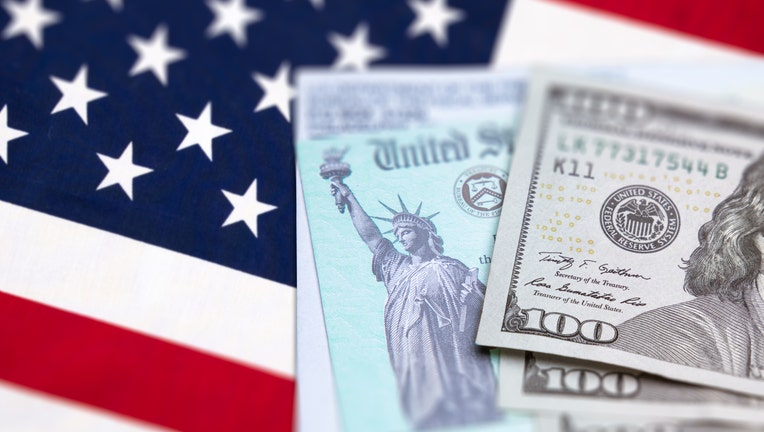How to get financial assistance if you didn't receive a stimulus check

You have financial options to stay afloat even if you aren’t getting a stimulus check. (iStock)
President Joe Biden signed into law on Thursday the $1.9 trillion coronavirus relief bill called the American Rescue Plan.
The stimulus bill features a third round of checks worth $1,400. In order to meet eligibility requirements, individuals must earn less than $75,000, or be a married couple who earns less than $150,000. Before the end of 2020, lawmakers had squeezed in the passing of a second relief bill that provided a $600 stimulus payment per individual.
While the long-awaited third stimulus check was a welcome relief to millions of Americans, many did not qualify to receive compensation because they didn’t meet the new bill's income thresholds.
If you’re struggling financially and do not expect to receive a stimulus check, it’s good to know you have options to help cover your expenses, such as:
- Personal loan
- 0% introductory APR credit card
- Home equity loan or line of credit
If you're debating getting a personal loan, consider using Credible. You can compare personal loan rates from multiple lenders without affecting your credit score.
7 SMALL PERSONAL LOANS TO CONSIDER IF YOU NEED SOME EXTRA CASH
1. Personal loan
A personal loan is a significant financial assistance option because it provides you with fast access to cash. Since personal loans require minimal documentation, you can often get the loan within 24 hours.
Of course, there are some potential drawbacks to personal loans. They generally carry high-interest rates and most lenders require a minimum loan amount of a few thousand dollars. If so, consider these options:
- Borrow more than you need to meet the minimum threshold. Then use the surplus to pay down the loan balance right away. Check with the lender first though to see if they charge a prepayment fee.
- Apply for a coronavirus hardship loan if you do not need more than the amount of a stimulus check. The minimum borrowing amount for this low-interest loan is $500.
You can use Credible to compare personal loan rates from multiple online lenders with loan amounts ranging from $600 to $100,000. You can also find your estimated loan payment by using Credible’s loan repayment calculator.
8 QUESTIONS TO ASK BEFORE TAKING OUT A PERSONAL LOAN
2. 0% introductory APR credit card
Another option for addressing financial needs without a stimulus check is to apply for a credit card with a 0% introductory APR. The card can help you cover necessary expenses until you can regain your financial footing. Ideally, you’ll be able to pay off your balance before the introductory APR period ends and avoid paying interest on the amount you borrow.
Carefully consider the amount of money you need to address your financial needs. The less money you borrow, the greater the likelihood you’ll pay off the balance before the introductory period expires. On the other hand, if you need more money than you can reasonably expect to repay within the initial period, you may be better off with a personal loan or a home equity option.
Before you open up a new line of credit, it’s important to compare cards so you can see which one will be the best fit for you. You can visit an online marketplace like Credible to compare different 0% credit cards and find your perfect match.
PERSONAL LOAN OR 0% APR CREDIT CARD: WHICH IS BETTER FOR DEBT CONSOLIDATION?
3. Home equity loan or HELOC
If you’re a homeowner with equity and you need some emergency funding, a home equity loan or home equity line of credit (HELOC) can provide you with enough money to stay afloat.
Home equity loans allow you to borrow a specific amount with fixed rates, while a HELOC is a revolving line of credit you can use to tide you over.
Only borrow what you need because these loans use your home as collateral. If you cannot make your payments, you run the risk of losing your home.
Keep in mind, both of these options come with minimums and closing costs that are not worth it if you only need a few hundred dollars. However, if you need a lot more financial assistance to get back on track, then a HELOC or home equity loan could provide just the help you need.
PERSONAL LOAN OR HOME EQUITY LOAN: WHICH IS BETTER?
The bottom line
If you didn’t receive a stimulus check the last time around, and you’re not expecting one in the future, a personal loan may provide you with fast access to much-needed cash.
If your financial needs are only a few hundred dollars, consider applying a 0% introductory APR credit card. Or consider a home equity loan or HELOC, as it may provide better options if you need significantly more money.
All these options have their advantages and disadvantages, so be sure to do your due diligence to determine the best course of action for you.
If you're interested in getting a personal loan but are unsure, it can help to have experienced loan officers on your side. Visit Credible to get all of your loan questions answered.

